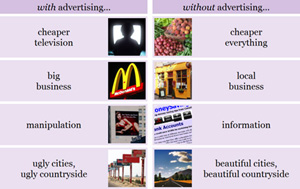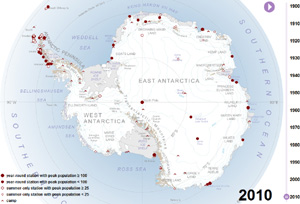Rivers of the Pacific
Notes
Most maps show rivers as squiggly flows over continents. This one flips the narrative, showing rivers as simplified flows into the Pacific Ocean.
Rivers confuse me.
They’re especially confusing where I live. The Columbia and Kootenay rivers both begin close to where I used to live in the East Kootenays. From there, one flows north and the other flows south. They come together again close to where I now live in the West Kootenays. The waters of these rivers cross the US-Canada border repeatedly, as if they can’t decide whether to flow north or south. Eventually they flow west into the Pacific.
Part of the problem is the way we map rivers. We show them in atlases as blue lines so thin that they’re barely visible. They’re rarely named. Which rivers flow into which other rivers? Who knows. Tracing those squiggly blue lines across the land is hard on the eyes.
This river map is completely different.
Instead of showing rivers flowing over a continent, it shows them flowing into an ocean. Why do we focus on continents so much more than oceans? When it comes to rivers, it’s all about the water, not the land.
Instead of showing every miniscule meander, this map simplifies. It’s all about which rivers flow into which other rivers, and which flow into the ocean.
Making this map clarifies a few things for me. I now see for the first time why the Mekong and Yangtze rivers are such a big deal. I have a better idea of the geography of the Red, Black, Yellow and Pearl rivers. And, closer to home, I now know that the Thomspon and Okanagan rivers never meet: one flows into the Pacific, in Canada, near Vancouver, via the Frazer, while the other flows into the Pacific, in the US, near Portland, via the Columbia.
Simplify, simplify.
Look out for follow-up maps – Rivers of the Atlantic, Rivers of the Indian, Rivers of the Arctic – coming soon.
Comments
Rodney ⋅ 16 August 2021
Wither the Skeena River?
Mark Jeffery ⋅ 23 August 2021
Good question, Rodney. The Skeena would appear between the Kuskokwim and Frazer… if there were enough room to show it!
The painful part of making this visualization was having to leave out all but the most major rivers. So many rivers, so few pixels!
W ⋅ 27 August 2021
Some rivers in southeastern China seem a little messed up. I don't know of a Longquan river, but in that region the Ou river (different than the one in Laos) is missing. There are other missing (and possibly misnamed?) rivers for the major cities in the Zhejiang/Fuzhou region. Futun flows into the Min river (distinct from the one in Sichuan) which is the one that flows into the Pacific.
Also it might be better to flip the text on the left side of the map to make them easier to read.
Mark Jeffery ⋅ 28 August 2021
Thanks, W. The rivers of Southeast Asia are confusing for sure: some rivers have several names, and some names are used for several rivers!
I’ve renamed the Longquan to the Ou/Oujiang, following your suggestion. As is often the case, it was shown as the Longquan in one of my sources (perhaps it’s called that close to the inland city of Longquan?) but shown as the Ou/Oujiang in other sources.
I’ve also renamed the Futun to the Min. Again, one of my sources had the Futun labeled but not the Min, misleading me into thinking that it’s all one river. Now fixed!
And yes, some rivers are missing. Since there’s an infinite number of rivers (rivers are fractals and fractals are infinite), I’ve had to limit this visualization to the largest rivers, in China and all around the Pacific.
If you find any other misnamed rivers, please do let me know, and I’ll fix those too! I appreciate your help, W.
Sources
Date
First published 13 August 2021










